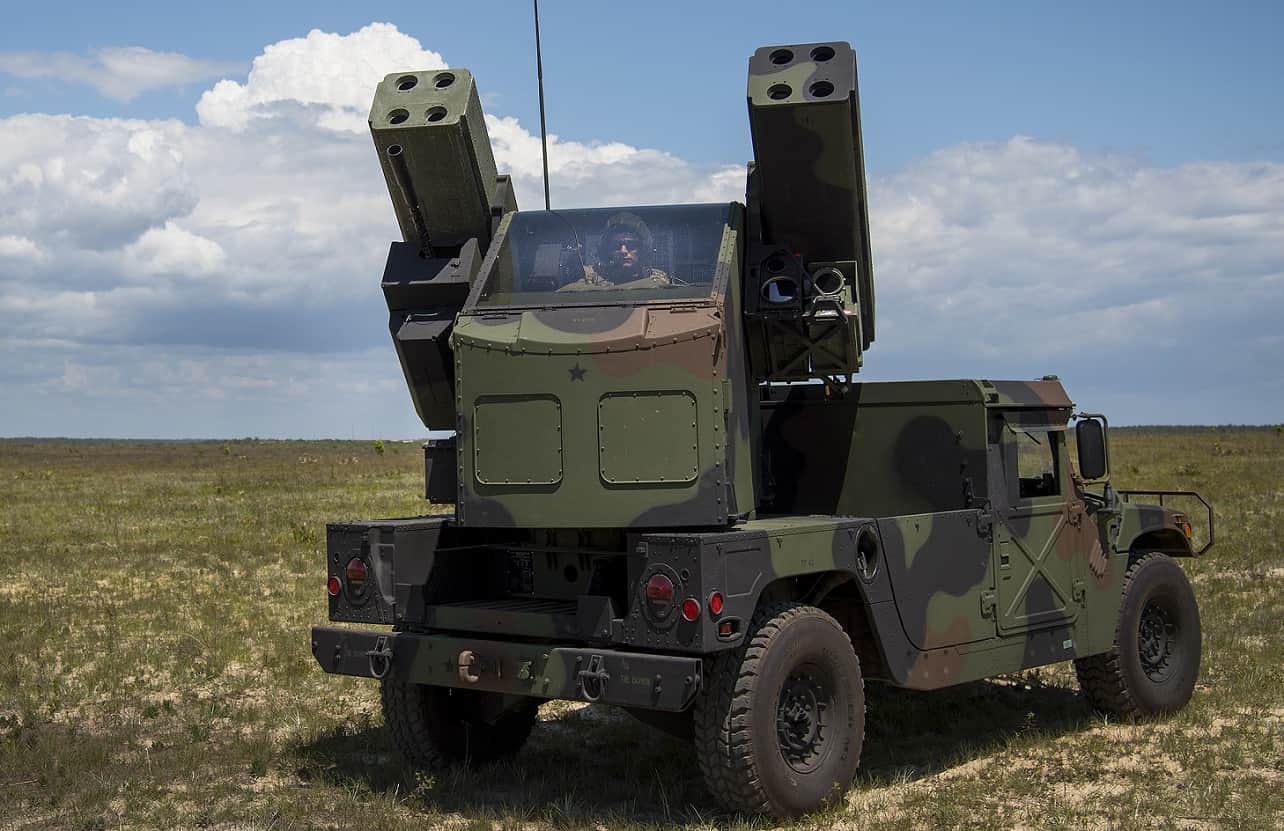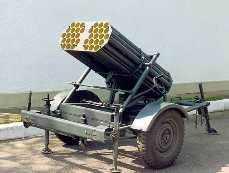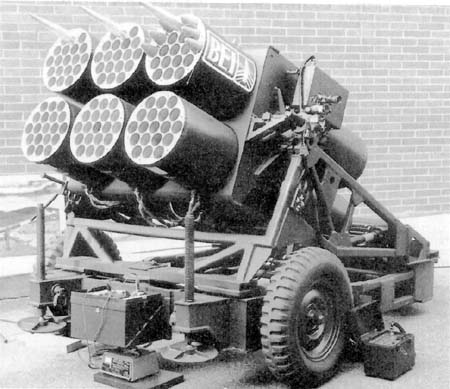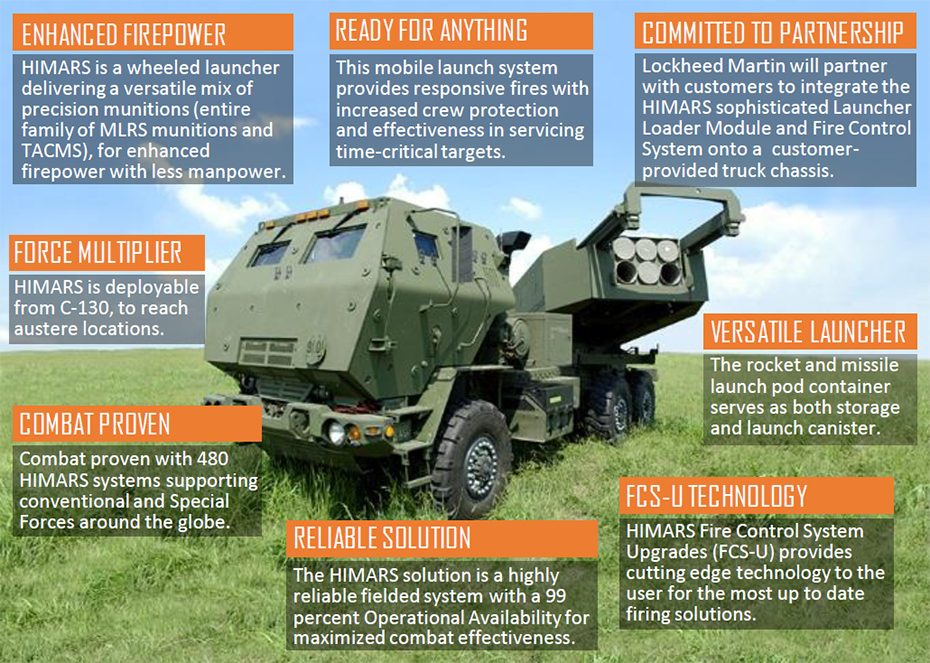You are using an out of date browser. It may not display this or other websites correctly.
You should upgrade or use an alternative browser.
You should upgrade or use an alternative browser.
C3 Howitzer Replacement
- Thread starter MattGotts
- Start date
- Reaction score
- 8,296
- Points
- 1,160
D&B
I get the MRLS preference - and I agree the need.
But are you honestly saying that you would turn your nose up at a couple of hundred 70mm rounds launched from the back of a couple of trucks or a re-purposed C1 mount?
Keep in mind the people talking about buying 120mm mortars to replace the 105s not on tactical grounds but because of their training value.
And the Rheinmetall UGV product is a Rheinmetall Canada product being developed in Quebec and presumably based on the Argo vehicle - also made in Canada.
I get the MRLS preference - and I agree the need.
But are you honestly saying that you would turn your nose up at a couple of hundred 70mm rounds launched from the back of a couple of trucks or a re-purposed C1 mount?
Keep in mind the people talking about buying 120mm mortars to replace the 105s not on tactical grounds but because of their training value.
And the Rheinmetall UGV product is a Rheinmetall Canada product being developed in Quebec and presumably based on the Argo vehicle - also made in Canada.
daftandbarmy
Army.ca Dinosaur
- Reaction score
- 32,211
- Points
- 1,160
Chris Pook said:D&B
I get the MRLS preference - and I agree the need.
But are you honestly saying that you would turn your nose up at a couple of hundred 70mm rounds launched from the back of a couple of trucks or a re-purposed C1 mount?
Keep in mind the people talking about buying 120mm mortars to replace the 105s not on tactical grounds but because of their training value.
And the Rheinmetall UGV product is a Rheinmetall Canada product being developed in Quebec and presumably based on the Argo vehicle - also made in Canada.
I like the idea of having 155mm available 24/7 for HE (PD-VT), Smk, Illum, Sub-munitions etc out to wonderfully long ranges, accurately (well, for a gunner that is
105mm too because 'Danger Close' is closer, but I could live with mortars for that.
- Reaction score
- 8,296
- Points
- 1,160
daftandbarmy said:I like the idea of having 155mm available 24/7 for HE (PD-VT), Smk, Illum, Sub-munitions etc out to wonderfully long ranges, accurately (well, for a gunner that is) and reliably.
105mm too because 'Danger Close' is closer, but I could live with mortars for that.
And why couldn't containers of missiles be on-call 24/7?
As to Danger Close - 70mm APKWS - Advanced Precision Kill Weapon System - https://www.thedefensepost.com/2019/09/26/bae-apkws-guided-rocket-contract/ - Range equivalent to the 81mm, HE load equivalent to the 105mm and CEP <0.5m. And the variety of warheads available is greater than that of mortars and almost as varied as tube launched bullets.
MilEME09
Army.ca Veteran
- Reaction score
- 2,794
- Points
- 1,210
Thanks for bringing up the CRV-7, We do make it here already. What is stopping us from truck mounting it? I imagine going Russian rocket party doctrine and having a truck or track mounted launcher with a few dozen tubes would be cheap. They apparently also make a laser guided version, so you could have an infantry section mark the target for a few rockets to come crashing down.
It is a organic, domestic system with a small supply chain. Could work to our benefit.
It is a organic, domestic system with a small supply chain. Could work to our benefit.
Attachments
daftandbarmy
Army.ca Dinosaur
- Reaction score
- 32,211
- Points
- 1,160
Chris Pook said:And why couldn't containers of missiles be on-call 24/7?
As to Danger Close - 70mm APKWS - Advanced Precision Kill Weapon System - https://www.thedefensepost.com/2019/09/26/bae-apkws-guided-rocket-contract/ - Range equivalent to the 81mm, HE load equivalent to the 105mm and CEP <0.5m. And the variety of warheads available is greater than that of mortars and almost as varied as tube launched bullets.
Totally possible of course, I'm just so old school .... plus being almost completely unaware of the capabilities of modern missile systems
- Reaction score
- 213
- Points
- 880
So it says per-unit cost of APKWS is over 20K USD. GMLRS and Excalibur are even pricier (I don't have current figures)
I think precision fires are great...but I'm not sure Canadian taxpayers will share my enthusiasm in the coming months and years. Yes, you will hit your target and probably save money in the long-term, but I just think it's going to be a hard sell after a pandemic and the resulting economic fallout. I can maybe see a small number being procured for use in Europe or perhaps if we find ourselves in another Afghanistan, that's about it.
I think precision fires are great...but I'm not sure Canadian taxpayers will share my enthusiasm in the coming months and years. Yes, you will hit your target and probably save money in the long-term, but I just think it's going to be a hard sell after a pandemic and the resulting economic fallout. I can maybe see a small number being procured for use in Europe or perhaps if we find ourselves in another Afghanistan, that's about it.
Chris Pook said:And why couldn't containers of missiles be on-call 24/7?
Because rockets/missiles are not really designed for Direct Fire (DS) support, but more for the deep fires of General Support (typically counter battery). To that end, their fires are controlled well above combat team level where DS fire support is more vital. The other reason they're not suitable, is their payloads are designed for lethal effects only, and they do not have sustained fire capability. So not much good if you want Illum, IR Illum, Smoke, multi-spectral smoke, or sustained neutralizing fire over a large area or target area with minimal definition that precludes the effectiveness of precision fires.
The health of the C3 and LG1 fleet doesn't seem to be very good, right now, and this most likely warrants more urgent attention than deep fire capabilities.
FJAG
Army.ca Legend
- Reaction score
- 13,771
- Points
- 1,160
This is why I'm also a fan of the Avenger SHORAD system for use by reservists.
- Small wheeled vehicle easy to maintain and move around.
- Easily stored in an armory and taken to a parking lot for training.
- Sufficiently complex skills needed to make it an interesting system for a soldier.
- We desperately need something quick and dirty and relatively low cost.
- I already mentioned that the US Army National Guard has five brigades and two separate battalions of Avengers so it's easily doable.

:cheers:
- Small wheeled vehicle easy to maintain and move around.
- Easily stored in an armory and taken to a parking lot for training.
- Sufficiently complex skills needed to make it an interesting system for a soldier.
- We desperately need something quick and dirty and relatively low cost.
- I already mentioned that the US Army National Guard has five brigades and two separate battalions of Avengers so it's easily doable.

:cheers:
- Reaction score
- 2,080
- Points
- 1,160
The beauty of NASAM is that it is land launched derivative of the ESSM ER, a missile compatible with the Mk 41 VLS. And it can be networked into an AEGIS system. Think of the possibilities there ... in fact, does naval rocketry then fall under RCA along with NGS fires (lol!).
Edit: I believe the Aussies are looking to fit that system onto the Hawkei.
Edit: I believe the Aussies are looking to fit that system onto the Hawkei.
FJAG
Army.ca Legend
- Reaction score
- 13,771
- Points
- 1,160
Something new:

See full article here:
https://militaryleak.com/2020/04/26/swiss-army-reveal-morser-16-120mm-mortar-system/?fbclid=IwAR3fhkAMxXdOiJ0eYSTWbTsiPInaaqcOS1LrGay4C0k3nVEjKzCs3JlVOR4
And here's a real weird video from the RUAG company (skip to the second half):
https://www.youtube.com/watch?v=nLT6zjGuOA8
:cheers:
The Swiss Army has just approved the induction of a new version of the Piranha IV 8×8 infantry fighting vehicle in self-propelled mortar carrier version called Mörser 16. In 2016, the Swiss parliament approved the procurement of 32 systems of a 120 mm (12 cm) RUAG MRO Cobra mortar system.

See full article here:
https://militaryleak.com/2020/04/26/swiss-army-reveal-morser-16-120mm-mortar-system/?fbclid=IwAR3fhkAMxXdOiJ0eYSTWbTsiPInaaqcOS1LrGay4C0k3nVEjKzCs3JlVOR4
And here's a real weird video from the RUAG company (skip to the second half):
https://www.youtube.com/watch?v=nLT6zjGuOA8
:cheers:
- Reaction score
- 1,674
- Points
- 1,060
What's the benefit of the above versus a turreted system like NEMO/AMOS? Cost?
another system on a smaller vehicle, but more vulnerable?
https://www.armyrecognition.com/april_2020_news_defense_global_security_army_industry/azerbaijani_army_trains_with_israeli-made_cardom_hatchet_recoil_mortar_system.html
or this
https://www.armyrecognition.com/july_2018_global_defense_security_army_news_industry/thai_army_has_performed_firing_tests_with_120mm_atmm_mortar_system.html
for MLRS?
http://www.military-today.com/artillery/azerbaijan_lynx.htm
another system on a smaller vehicle, but more vulnerable?
https://www.armyrecognition.com/april_2020_news_defense_global_security_army_industry/azerbaijani_army_trains_with_israeli-made_cardom_hatchet_recoil_mortar_system.html
or this
https://www.armyrecognition.com/july_2018_global_defense_security_army_news_industry/thai_army_has_performed_firing_tests_with_120mm_atmm_mortar_system.html
for MLRS?
http://www.military-today.com/artillery/azerbaijan_lynx.htm
Oldgateboatdriver
Army.ca Veteran
- Reaction score
- 2,266
- Points
- 1,010
Pardon my seaman's ignorance, but you all seem to look at rockets, howitzers and mortars as if they are interchangeable, i.e. getting one or the other doesn't matter as long as you get something. In my seaman's experience, each of my guns, missiles or rockets (yeah! We still had some on the IRE's, just forward of the ASROC launcher, for illumination purposes, until removed in the early 80's.) are for a different purpose and having one does not replace the others.
Is it different for the Army and so long as you can put any type of ordinance on target, the how and from where does not matter, or am I missing something?
Also, isn't a mortar a short range weapon, even compared to a 105 howitzer, or am I wrong again?
Is it different for the Army and so long as you can put any type of ordinance on target, the how and from where does not matter, or am I missing something?
Also, isn't a mortar a short range weapon, even compared to a 105 howitzer, or am I wrong again?
daftandbarmy
Army.ca Dinosaur
- Reaction score
- 32,211
- Points
- 1,160
Oldgateboatdriver said:Pardon my seaman's ignorance, but you all seem to look at rockets, howitzers and mortars as if they are interchangeable, i.e. getting one or the other doesn't matter as long as you get something. In my seaman's experience, each of my guns, missiles or rockets (yeah! We still had some on the IRE's, just forward of the ASROC launcher, for illumination purposes, until removed in the early 80's.) are for a different purpose and having one does not replace the others.
Is it different for the Army and so long as you can put any type of ordinance on target, the how and from where does not matter, or am I missing something?
Also, isn't a mortar a short range weapon, even compared to a 105 howitzer, or am I wrong again?
That's why we, who are customers of the artillery, should focus on what 'effect' we want, and they'll figure it out from there.
Or so I've been told a couple of times by p*ssed off gunners
MilEME09
Army.ca Veteran
- Reaction score
- 2,794
- Points
- 1,210
Oldgateboatdriver said:Pardon my seaman's ignorance, but you all seem to look at rockets, howitzers and mortars as if they are interchangeable, i.e. getting one or the other doesn't matter as long as you get something. In my seaman's experience, each of my guns, missiles or rockets (yeah! We still had some on the IRE's, just forward of the ASROC launcher, for illumination purposes, until removed in the early 80's.) are for a different purpose and having one does not replace the others.
Is it different for the Army and so long as you can put any type of ordinance on target, the how and from where does not matter, or am I missing something?
Also, isn't a mortar a short range weapon, even compared to a 105 howitzer, or am I wrong again?
It basically comes down to what effect we want, and the range we want to do it at. Mortors have a short range, howitzers longer, rockets even further, and missiles in theory the furthest range. It comes down to what you want to accomplish, what the systems roll is. Mortors due to their short range usually are up close with your A echelon, howitzers in your BSA, and missile's could be further back then that potentially.
Rockets are cheap, easy to fire and forget, and can blanket a large area, think of it as the beaten zone of a machine gun, not super accurate but can suppress a target area.
Missiles are the scalple, precision, neutralizing fire, but costly.
Mortors because of their short range means they are close to the fight, meaning their reaction van he quick to provide support, including smoke and illumination.
Howitzers are your swiss army knife, usually a good combination of range and firepower, and now even have Rocket assisted projectiles, and GPS munitions for increased range and precision.
Don’t forget, non lethal is a capability required too, as mentioned above rockets and missiles are typically designed for lethal effects only and generally not capable of sustained fire
The Reserves need something that minimizes the training delta between the skill sets they can achieve, in the limited training available to them, and the skill sets required to be deployed. It would also be desirable if that equipment were the same as that deployed, but it would be a hard argument to say that is essential (and given the complexity of modern systems, if it’s even possible)
The Reserves need something that minimizes the training delta between the skill sets they can achieve, in the limited training available to them, and the skill sets required to be deployed. It would also be desirable if that equipment were the same as that deployed, but it would be a hard argument to say that is essential (and given the complexity of modern systems, if it’s even possible)
- Reaction score
- 2,080
- Points
- 1,160
A non lethal howitzer? A giant sized Lepage glue gun?
MilEME09
Army.ca Veteran
- Reaction score
- 2,794
- Points
- 1,210
CloudCover said:A non lethal howitzer? A giant sized Lepage glue gun?
Non-lethal includes illumination, and smoke rounds
GR66
Army.ca Veteran
- Reaction score
- 4,150
- Points
- 1,160
MilEME09 said:Non-lethal includes illumination, and smoke rounds
And don't forget Marshmallows!
https://www.washingtonpost.com/news/powerpost/wp/2016/04/13/watch-obama-helps-launch-a-marshmallow-cannon-at-the-white-house/
- Reaction score
- 8,296
- Points
- 1,160
The 70mm rockets are produced in a number of countries, including Canada and Brazil.
Avibras claims that the unguided rocket in ground to ground ballistic mode, effectively area suppression, has a range of up to 12 km
This compares to the C1 105mm at 11 km and the C3 at 18 km.
The 70 mm ballistic rockets can be converted into Precision Guided Missiles that can be launched from the same launchers as the ballistic rockets. The converted rocket is known as the Advanced Precision Kill Weapons System II and is considered as a low cost alternative to the Hellfire ATGM. The range of the 70 mm APKWS II in Direct Fire mode is variously given as up to 5 km.
Common warheads available for the 70mm rocket seem to replicate the range of warheads available to 105mm howitzers - both lethal and non-lethal.
Designation Description Weight Payload
M151 High explosive (HEDP) '10 pounder' 8.7 pounds (3.9 kg) (w/o Fuze) 2.3 pounds (1.0 kg) Comp B-4 HE
M156 White phosphorus munitions (WP) 9.65 pounds (4.38 kg) 2.2 pounds (1.00 kg) WP
M229 High explosive (HEDP); elongated M151 '17 pounder' 17.0 pounds (7.7 kg) (Fuzed) 4.8 pounds (2.2 kg) Comp B-4 HE
M247 High-explosive anti-tank (HEAT)/high-explosive dual purpose (HEDP) 8.8 pounds (4.0 kg) 2.0 pounds (0.91 kg) Comp B HE M255 APERS (anti-personnel) warhead 2500 28 grains (1.8 g) flechettes
M257 Parachute illumination 11.0 pounds (5.0 kg) One M257 Candle (Flare) 1 million candela
M259 White phosphorus (WP) 9
M261 Multi-purpose submunition (MPSM) 13.5 pounds (6.1 kg) 9 M73 (Grenade) Submunitions
M264 Red phosphorus (RP) Smoke 8.6 pounds (3.9 kg) 72 RP Pellets
M267 MPSM Practice 13.5 pounds (6.1 kg) Three Marking SMs, 6 Metal Weights
M274 Practice (Smoke) 9.3 pounds (4.2 kg) 2 ounces (57 g) of potassium perchlorate and aluminum powder
M278 Infra-red (IR) parachute illumination 11.0 pounds (5.0 kg) One M278 IR Flare
M282 Multipurpose penetrator warhead 13.7 pounds (6.2 kg) 0.98 pounds (0.44 kg) PBXN-110
Mk 67 Mod 0 White phosphorus (WP)
Mk 67 Mod 1 Red phosphorus (RP)
WTU-1/B Practice 9.3 pounds (4.2 kg) Inert
WDU-4/A APERS warhead 9.3 pounds (4.2 kg) 96 flechettes of unknown weight
WDU-4A/A APERS warhead 9.3 pounds (4.2 kg) 2205 20 grains (1.3 g) flechettes
Fuzing options for 70mm rockets
# Designation Description Arming Range, Acceleration or Time
1 M423 Nose Mount, Point Detonating for slow speed platforms (helicopters) 47 to 102 yards (43 to 93 m)
2 M427 Nose Mount, Point Detonating for high speed platforms 197 to 466 yards (180 to 426 m)
3 XM436 Air burst, Motor-Burnout Delay
4 XM438/M438 Nose Mount, Point Detonating
5 M440 Point Detonating
6 Mk 352 Mod 0/1/2 Point Detonating
7 M429 Proximity Air burst
8 M433 Nose Mount, Resistance Capacitance (RC)
9 M439 Base Mount, Resistance Capacitance (RC), Payload Discharging Pilot-Selectable
10 M442 Air burst, Motor-Burnout Delay
11 M446 Base Mount, Air burst, Motor-Burnout Delay
12 Model 113A Base Mount, Air burst, Motor-Burnout Delay
To my mind providing fire support with something like this is akin to launching direct from the limber.


And while rippling a single type of warhead is possible it is equally possible to mix up the warheads and launch singly over time.
Here's a comparison of Payloads (ie effects).
81mm M821 - 0.68 kg Comp B
70mm M151 - 1.0 kg Comp B4
70mm M229 - 2.2 kg Comp B4
105mm M1 - 2.1 kg Comp B
120mm M933 - 2.99 kg Comp B
And just for reference the US Army's ACERM (Advanced Capability Enhanced Range Mortar) program is looking for a 20 km 81mm mortar. That seems to me to indicate that the Battalion's Area of Interest is getting a lot larger - in fact exceeding the current Brigade's and Artillery Regiment's Area.
Avibras claims that the unguided rocket in ground to ground ballistic mode, effectively area suppression, has a range of up to 12 km
This compares to the C1 105mm at 11 km and the C3 at 18 km.
The 70 mm ballistic rockets can be converted into Precision Guided Missiles that can be launched from the same launchers as the ballistic rockets. The converted rocket is known as the Advanced Precision Kill Weapons System II and is considered as a low cost alternative to the Hellfire ATGM. The range of the 70 mm APKWS II in Direct Fire mode is variously given as up to 5 km.
Common warheads available for the 70mm rocket seem to replicate the range of warheads available to 105mm howitzers - both lethal and non-lethal.
Designation Description Weight Payload
M151 High explosive (HEDP) '10 pounder' 8.7 pounds (3.9 kg) (w/o Fuze) 2.3 pounds (1.0 kg) Comp B-4 HE
M156 White phosphorus munitions (WP) 9.65 pounds (4.38 kg) 2.2 pounds (1.00 kg) WP
M229 High explosive (HEDP); elongated M151 '17 pounder' 17.0 pounds (7.7 kg) (Fuzed) 4.8 pounds (2.2 kg) Comp B-4 HE
M247 High-explosive anti-tank (HEAT)/high-explosive dual purpose (HEDP) 8.8 pounds (4.0 kg) 2.0 pounds (0.91 kg) Comp B HE M255 APERS (anti-personnel) warhead 2500 28 grains (1.8 g) flechettes
M257 Parachute illumination 11.0 pounds (5.0 kg) One M257 Candle (Flare) 1 million candela
M259 White phosphorus (WP) 9
M261 Multi-purpose submunition (MPSM) 13.5 pounds (6.1 kg) 9 M73 (Grenade) Submunitions
M264 Red phosphorus (RP) Smoke 8.6 pounds (3.9 kg) 72 RP Pellets
M267 MPSM Practice 13.5 pounds (6.1 kg) Three Marking SMs, 6 Metal Weights
M274 Practice (Smoke) 9.3 pounds (4.2 kg) 2 ounces (57 g) of potassium perchlorate and aluminum powder
M278 Infra-red (IR) parachute illumination 11.0 pounds (5.0 kg) One M278 IR Flare
M282 Multipurpose penetrator warhead 13.7 pounds (6.2 kg) 0.98 pounds (0.44 kg) PBXN-110
Mk 67 Mod 0 White phosphorus (WP)
Mk 67 Mod 1 Red phosphorus (RP)
WTU-1/B Practice 9.3 pounds (4.2 kg) Inert
WDU-4/A APERS warhead 9.3 pounds (4.2 kg) 96 flechettes of unknown weight
WDU-4A/A APERS warhead 9.3 pounds (4.2 kg) 2205 20 grains (1.3 g) flechettes
Fuzing options for 70mm rockets
# Designation Description Arming Range, Acceleration or Time
1 M423 Nose Mount, Point Detonating for slow speed platforms (helicopters) 47 to 102 yards (43 to 93 m)
2 M427 Nose Mount, Point Detonating for high speed platforms 197 to 466 yards (180 to 426 m)
3 XM436 Air burst, Motor-Burnout Delay
4 XM438/M438 Nose Mount, Point Detonating
5 M440 Point Detonating
6 Mk 352 Mod 0/1/2 Point Detonating
7 M429 Proximity Air burst
8 M433 Nose Mount, Resistance Capacitance (RC)
9 M439 Base Mount, Resistance Capacitance (RC), Payload Discharging Pilot-Selectable
10 M442 Air burst, Motor-Burnout Delay
11 M446 Base Mount, Air burst, Motor-Burnout Delay
12 Model 113A Base Mount, Air burst, Motor-Burnout Delay
To my mind providing fire support with something like this is akin to launching direct from the limber.


And while rippling a single type of warhead is possible it is equally possible to mix up the warheads and launch singly over time.
Here's a comparison of Payloads (ie effects).
81mm M821 - 0.68 kg Comp B
70mm M151 - 1.0 kg Comp B4
70mm M229 - 2.2 kg Comp B4
105mm M1 - 2.1 kg Comp B
120mm M933 - 2.99 kg Comp B
And just for reference the US Army's ACERM (Advanced Capability Enhanced Range Mortar) program is looking for a 20 km 81mm mortar. That seems to me to indicate that the Battalion's Area of Interest is getting a lot larger - in fact exceeding the current Brigade's and Artillery Regiment's Area.



